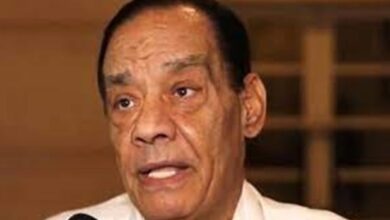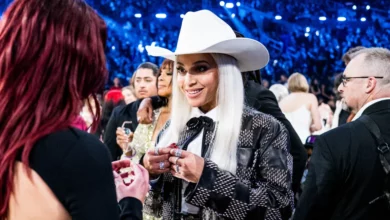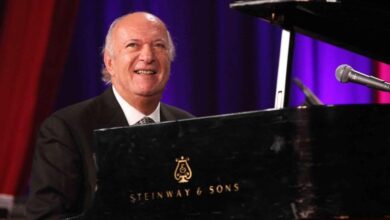Michael Zerang, for example, played his traditional tabla upside down using two vibrating wires so that the tabla seemed to be playing itself between his hands. Experimental pieces like Zerang’s, which pushed the boundaries of musical practices, filled the festival, showing that there is a diverse and experimental music scene in the Middle East.
The festival began with a conference entitled Volatile Frequencies at City University, followed by a weekend of music and debate held in the small venue of Café Oto, tucked away in a corner of East London. It was organized by the Zenith Foundation, as part of their ongoing Mazaj program, in collaboration with Sound and Music and The Wire magazines.
Seth Ayyaz, a composer-performer and main organizer of the festival, explained that this is something he has wanted to do for many years, “to open up a discourse around the sonic cultures of the Middle East and to contribute to developing an infrastructure for supporting this kind of practice.”
Discussions centred around notions of the avant-garde and what it means to be a Middle Eastern artist making experimental music. Sharif Sehnaoui explained that his music is deemed to be too “occidental” in both the West and his home country, Lebanon. This is “a typical misunderstanding of what we do,” added Sehnaoui. There was much talk of the problems of being put in the dreaded category of ‘world music’, where the ethnicity of the artist trumps the music itself. The work should be allowed to speak for itself so as to occupy a more fluid realm of international contemporary experimental music, where the origin of the artist is beside the point.
Egyptian artist Hassan Khan explained that “there’s always the desire to pigeonhole me but I’m always trying to be one step ahead of it.” He had just pulled out of a talk he was scheduled to give on New Wave Shaabi music, so as to avoid playing the role of the “local informant.” It seems there is a constant struggle for Middle Eastern artists to have their music seen in its own right and away from its artist’s cultural background.
Ayyaz is very aware of the contradictions of billing this as a Middle Eastern music festival, while at the same time not wanting it to be stereotyped as such. He acknowledges that the phrase ‘Middle Eastern music’ “immediately becomes code for a very clear set of assumptions”, which can be a straitjacket. He does not want the festival to be about showcasing regional music, as “then you have the idea that the musicians have to come as standard bearers, as ambassadors.”
The idea is not, however, to erase or deny one’s background or cultural history. As improviser Eddie Prévost put it, “we all have barnacles on us from the past, and it’s difficult to scrape them off and sometimes quite painful.” It is rather about giving music a space away from the constraints of pre-existing culturally defined categories and expectations.
Indeed, it would be most confusing to approach this festival with such preconceptions, as this is music that has thrown away the rule book. An improvised performance by Mazen Kerbaj, Zerang, Sehnaoui and Prévost explored of the scope of sounds an instrument can make. Kerbaj played his trumpet through various pipes and tubes. He removed the mouthpiece and blew in and around it and used an array of utensils to distort the sound. Zerang scrapped and slapped his drum with wooden blocks, his hands and other implements. Sehnaoui placed his guitar face-up on his lap and played it with sticks and tongs. And Prévost played the side of a symbol with a bow. The four musicians coaxed their instruments out of their comfort zones, and the audience strained to see how they were creating these weird and wonderful sounds that fit together unexpectedly and filled the crowded room.
Chris Weaver is production manager at Resonance FM, an alternative arts radio station, where the artists performed an improvised hour-long live set. He talked of the way in which improvisations can be “very bitty and dynamic and there’s lots of interplay. Occasionally there’s either a rhythmic conversation or a synthesis where everyone is building this mirage, this shimmer.” Of this particular performance, he felt there were parts where “this musical dust cloud slowly formed, and it was beautiful.”
Other notable performances were Ayyaz’s Makharej, featuring Egyptian actress Amira Ghazalla. The piece was an investigation of the sounds and physicality of the Arabic language, based around the idea that “language exists in the body.” Giulia Loli, aka Mutamassik, is a turntablist and her set presented music she has pioneered. She describes her music as Afrocentric, Baladi Breakbeat and Sa‘eedi Hardcore. Loli is an American-born of Italian-Egyptian parentage. Sa‘eedi (Upper Egyptian) music is “really the thing I gravitate towards the most, it completely resonates for me,” she explains. The pieces she presented took Arabic sounds and forms of music and used them as jumping off points for experimentation and exploration.
A highlight of the festival was Hassan Khan’s New Wave Shaabi piece The Big One (al-Wahda al-Kebira) where Khan worked as composer and arranger, recording Shaabi (popular) musicians in a studio. And the results are raucous and captivating, creating something unique that pulls apart the layers of this very Egyptian genre of music. Khan describes Shaabi music as “rough but sophisticated”, and explains that “because I am a fan I want to perform it, I want to play it, but I come from my own background and play it with my own background.” And really, it needn’t be about anything more than that.
London–The Mazaj Festival of Experimental Middle Eastern Music, which took place in London from 18-21 November 2010, was not a ‘typical Middle Eastern’ music event.




